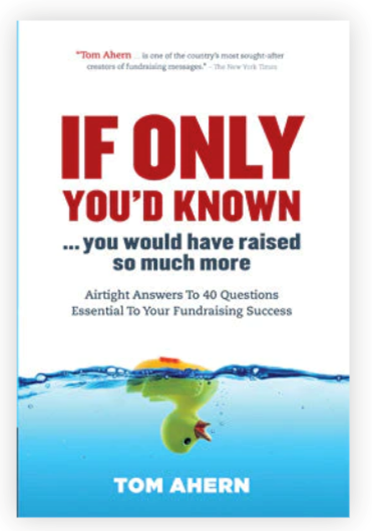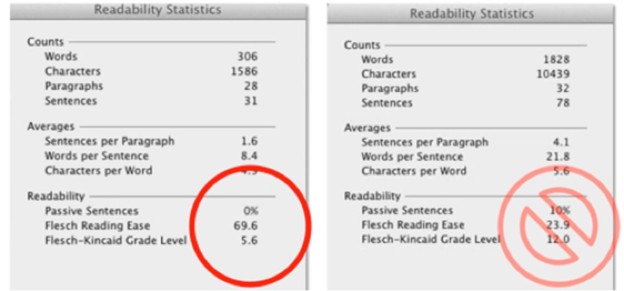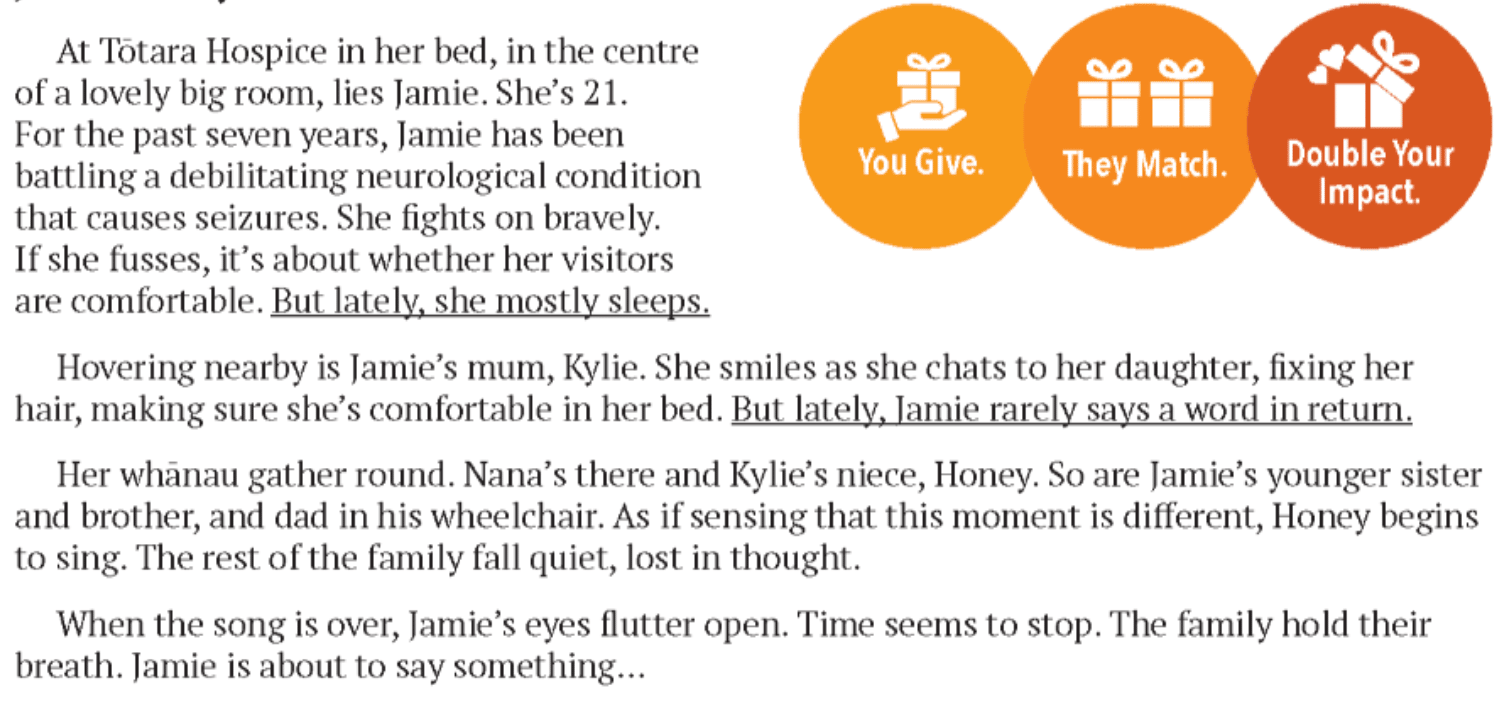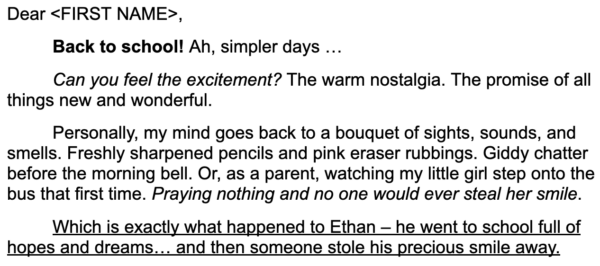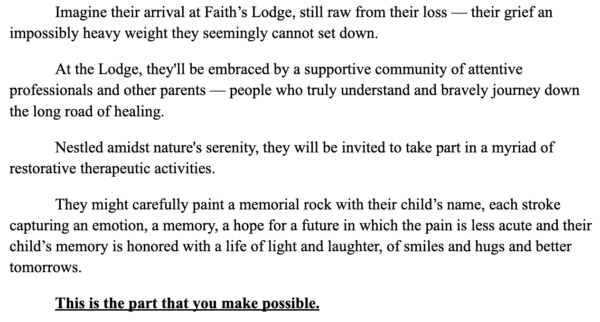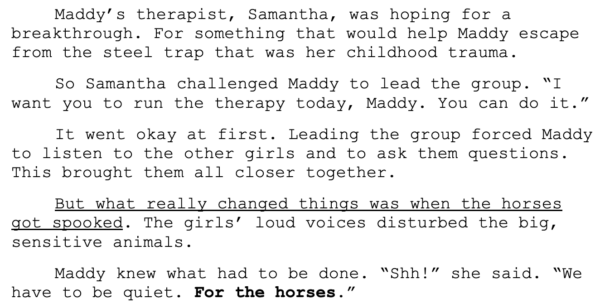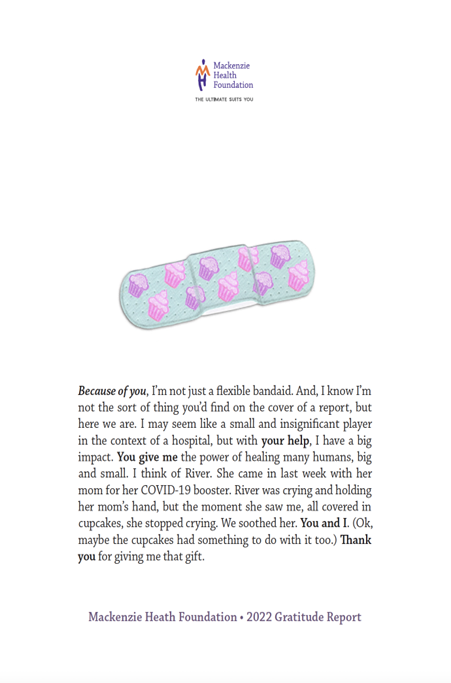The following is a hand-picked guest post from John Lepp. Enjoy, and you can read more about John below.
* * *
I know we like to believe that one of our donors is sitting in their armchair, maybe beside a fire, with a hot cup of tea and their beloved cat purring on their lap waiting… listening… for that clang and tiny screech as the metal flap on their mail box shuts, thus ensuring the safe arrival of your latest annual report.
We imagine them flinging poor Ron, the cat, off their laps and jumping to their feet! “WOOHOOOOO!!!! My charity’s annual report has ARRIVED TODAY!!!!”
Don’t we imagine that?
What if I could tell you 3 ways you might be able to get your donor to do JUST that, next time you send them your annual report?
1. Do you want to read an ‘annual report’?
Probably not.
68 pages of 8 point reversed type that adheres to your soul destroying, dumpster burning, graphic standards that some art director from a commercial agency put together and that you now must religiously stick to so that – lord forbid – you do not go ‘off brand’… whatever that means.
68 pages of all of the amazing things that every board member has ever thought of in their entire life about their fantastic accomplishments, page after page of stats, people holding big checks, figures, infographics, pie charts and names of your most important donors (ie: the rich ones). Do you want to read that?
No? Shocker.
Consider, my friends, the idea of a gratitude report. In a nutshell, a gratitude report is only as long as it needs to be. A report that tells your donors a love-filled story about something they made possible by their giving, is filled with plenty of you’s, shares the nutshell successes of how you continue to meet the needs of your mission with their amazing support and is inclusive of all donors.
Not just the rich ones.
2. Can you tell a fantastic story?
I have 3 examples.
i) From a women’s shelter. We were handed Ana’s story, written by her own hand, telling of her abuse by her partner. It was a story of how she found herself in a country without any support from friends or family. This story was not watered down by the head of comms or edited by a committee of 8 people in a circulated, tracked changes word file… It was her story – from her hand to our eyes. And I wanted to honour her without sensationalizing her.
This was the cover of the report.
White handwriting on a black cover. No logo. Do you want to see what she shares next? Of course you do. You can download the whole report here.
ii) For a hospital foundation. Getting your donor’s attention isn’t enough. But it IS getting harder to do even that every day. And if we can get their attention, we must reward them for it. For this gratitude report we started with a simple illustration of a bandaid, covered in cupcakes and put that on the cover. It says:
“Because of you, I’m not just a flexible bandaid. And, I know I’m not the sort of thing you’d find on the cover of a report, but here we are. I may seem like a small and insignificant player in the context of a hospital, but with your help, I have a big impact. You give me the power of healing many humans, big and small. I think of River. She came in last week with her mom for her COVID-19 booster. River was crying and holding her mom’s hand, but the moment she saw me, all covered in cupcakes, she stopped crying. We soothed her. You and I. (Ok, maybe the cupcakes had something to do with it too.) Thank you for giving me that gift.”
Fully utilizing the full universe of interesting voices around you (beyond the blah, blah blah of your professional leaders) can show your donors a different perspective to their giving that they might not be aware of. Also, make sure to focus on the big and small ways that donor gifts can make a difference.
iii) For a hospice. Focus on ALL your donors. This report focused on why donors, giving big and small gifts, care so deeply about this mission and cause. It is filled with the emotional WHY they care and give.
This is a fantastic example of social proof. Your donor is sipping her tea and feeling echoes of her own feelings and thoughts about her connection to the cause.
I especially like this report because we used the visual theme of a quilt. For anyone who has had the pleasure of visiting (and even if you haven’t), you would see these quilts hung around various parts of the ‘house’. These quilts are tributes and symbols of the lasting memories of those beautiful souls that have passed on while in the care of this organization.
You can download the whole report here.
3. Who should get it?
We typically do a small print run. Yes, that’s right.
We actually mail out printed copies of the report. We put it in a 9” x 12” envelope with first class postage with a cover letter attached to it and a personal, handwritten note, ideally from a board member or ED.
We only mail it to the TOP 20% of your donors. Since you likely are getting 80% of your revenue from these folks day after day, you can make the case that they are the ones that care the most about you. Mid level to high level donors, monthly donors, legacy donors, loyal donors (of any gift size) typically fall into this category.
For the rest of your donors that you have a mail address for, send them a postcard with an image of your striking cover, letting them know you have created something JUST FOR THEM and they can call you or email you (an actual person please) and ask for their own copy.
Yes, post a version of it on your website. Yes, email a link for it to your donors that you have emails for, with a personal email suggesting why they might want to look at it and why you would be more than happy to talk to them about it if they have any questions.
Do you want to create annual reports that you hate doing and no one wants to read?
OR
Do you want to craft loving gratitude reports for your beautiful donors, these amazing humans that make your missions hopes, dreams and values come true?
Agents of Good are experts at bringing these reports to life – contact me, John Lepp, at john@agentsofgood.org if you want to talk about your next gratitude report that will leave your donors SPRINGING from their chair (and hopefully not harming the cat in the process!).
* * *
Steven says: “The following is a guest post from John Lepp, the co-founder of Agents of Good in Toronto. John has the best understanding of how fundraising actually works that I’ve ever met, and then he ‘turns it up to 11’ by being a great guy to hang out with. You should subscribe to his blog here.”





